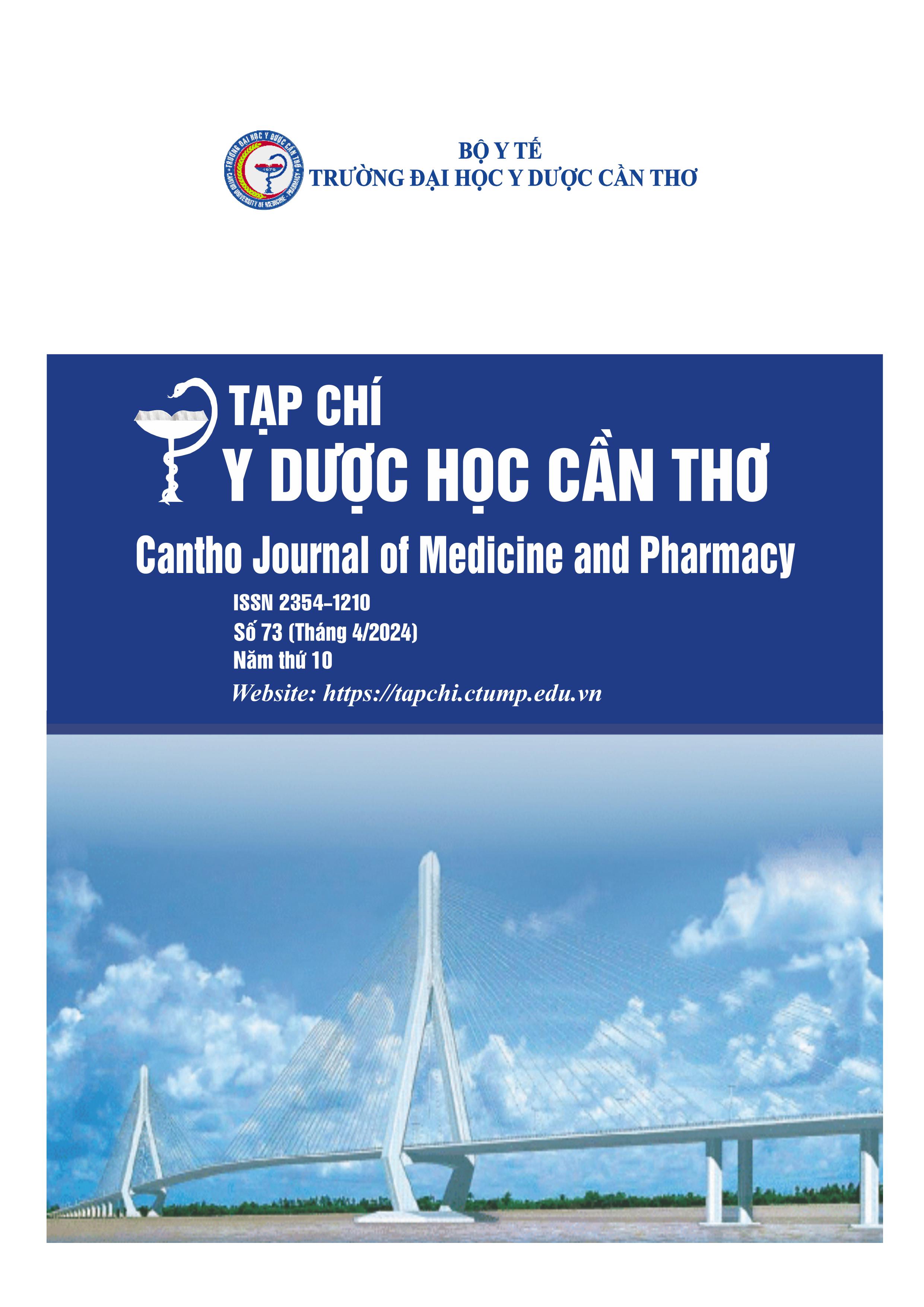SURVEY OF INFECTION SITUATION AND ESBL PRODUCING CAPACITY FOR GRAM-NEGATIVE BACTERIAL STRAINS ISOLATED AT CAN THO UNIVERSITY OF MEDICINE AND PHARMACY HOSPITAL IN 2022-2023
Main Article Content
Abstract
Background: Gram-negative bacteria are among the primary culprits behind primary infections, particularly those acquired in hospital infections. In addition, gram-negative bacteria can also produce ESBL, which is one of the important causes of antibiotic resistance. Objective: To determine the infection rate and ESBL-producing ability of gram-negative bacterial strains at Can Tho University of Medicine and Pharmacy Hospital in 2022-2023. Materials and methods: Crosssectional descriptive study on 187 patients with gram-negative infections and had antibiograms at Can Tho University of Medicine and Pharmacy Hospital from June 2022 to June 2023. Results: The 4 strains of gram-negative bacteria with the highest proportion were Klebsiella spp. (33.2%), Escherichia coli (27.3%), Enterobacter spp. (18.2%) and Citrobacter spp. (16.6%). There were 32.1% of isolated Gram-negative bacteria strains that produced ESBL. The rate of ESBL production in bacteria, Enterobacter spp. is 38.2%, Escherichia coli (37.3%), Citrobacter spp. (35.5%), Klebsiella spp. (22.6%), other strains of gram-negative bacteria (33.3%). Conclusion: Klebsiella spp., Escherichia coli, Enterobacter spp. and Citrobacter spp. has the highest infection rate. The ESBL production rate of gram-negative bacterial strains is 37.3%. Bacteria with high ESBL production rate: Enterobacter spp., Escherichia coli, Citrobacter spp., Klebsiella spp…
Article Details
Keywords
ESBL, Escherichia coli, Klebsiella spp., Enterobacter spp.
References
2. Lương Thị Hồng Nhung, Hoàng Anh, Trần Thị Kim Hạnh, Nghiêm Xuân Quyết. Đặc điểm kháng kháng sinh của một số vi khuẩn gram âm sinh enzyme beta lactamase phổ rộng phân lập được tại Bệnh viện Trung ương Thái Nguyên năm 2028 - 2020. Tạp chí Y học. 2022. 512(2), https://doi.org/10.51298/vmj.v512i2.2313.
3. Nguyễn Xuân Quýnh và Nguyễn Đăng Mạnh. Nghiên cứu căn nguyên và tình trạng kháng kháng sinh của vi khuẩn ở bệnh nhân nhiễm khuẩn huyết do viêm đường mật tại Bệnh viện Trung ương Quân đội 108. Tạp chí Y Dược lâm sàng 108. 2019. 14 (1), 123-129.
4. Hồng Thị Khánh Ngân và Phạm Thị Bích Phượng. Tần suất vi khuẩn sinh men beta-lactamase phổ rộng và tính đề kháng kháng sinh của chúng tại bệnh viện Bình Dân. Tạp Chí Y học Việt Nam. 2023. 528(2), 12-14, https://doi.org/10.51298/vmj.v528i2.6108.
5. Nguyễn Chí Nguyễn, Nguyễn Dương Hiển, Lê Thúy An, Nguyễn Thị Diệu Hiền, Trần Đỗ Hùng. Xác định tỷ lệ nhiễm và sự đề kháng kháng sinh của Klebsiella pneumoniae sinh carbapenemase được phân lập từ các mẫu bệnh phẩm tại Bênh viện Đa khoa Thành phố Cần Thơ và Bệnh viện Đa khoa Trung ương Cần Thơ năm 2021-2022. Tạp chí Y Dược học Cần Thơ. 2022. 50, 164171, https://doi.org/10.58490/ctump.2022i50.139.
6. Jamali S., et al. The Phylogenetic Relatedness of blaNDM - 1 Harboring Extended - Spectrum Beta Lactamase Producing Uropathogenic Escherichia coli and Klebsiella pneumoniae in the North of Iran, Infection and Drug Resistance. 2020. 13(1), 651 - 657, doi: 10.2147/IDR.S230335.


